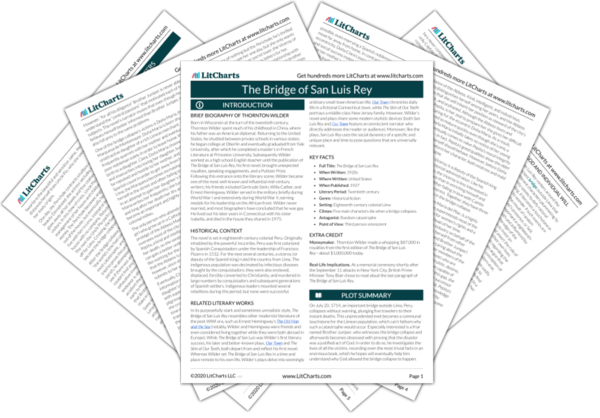Brother Juniper believes that an understanding of the divine plan is crucial to living a good life, but the Abbess argues the opposite; rather than rational thought, it’s the feeling of selfless love that allows people to live well and to grow spiritually, even though they may never understand God’s plan or even believe in its existence.
